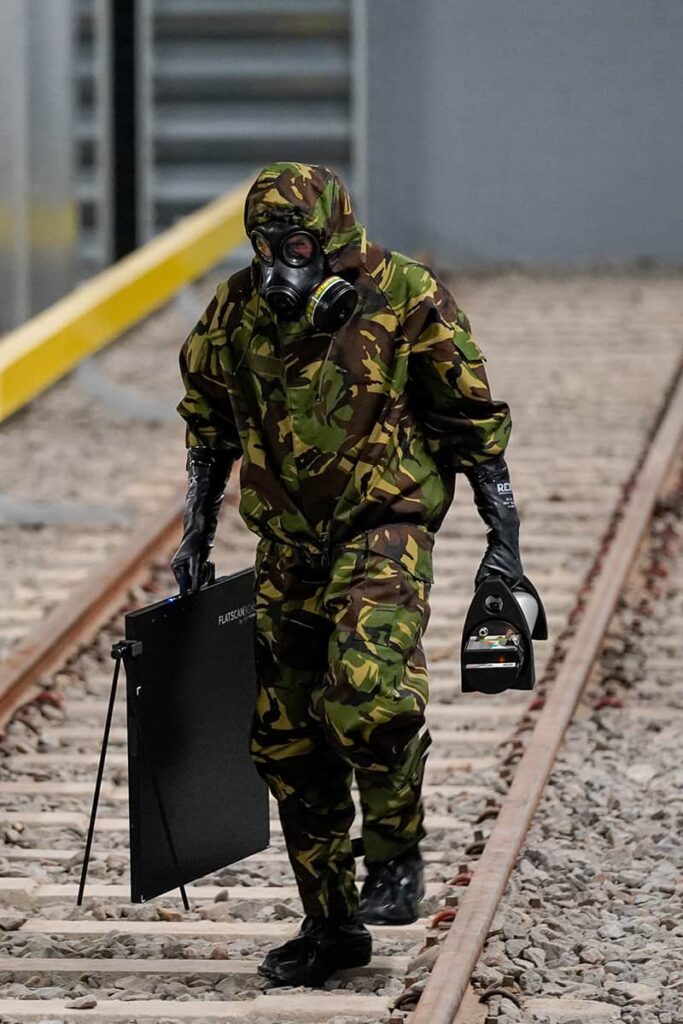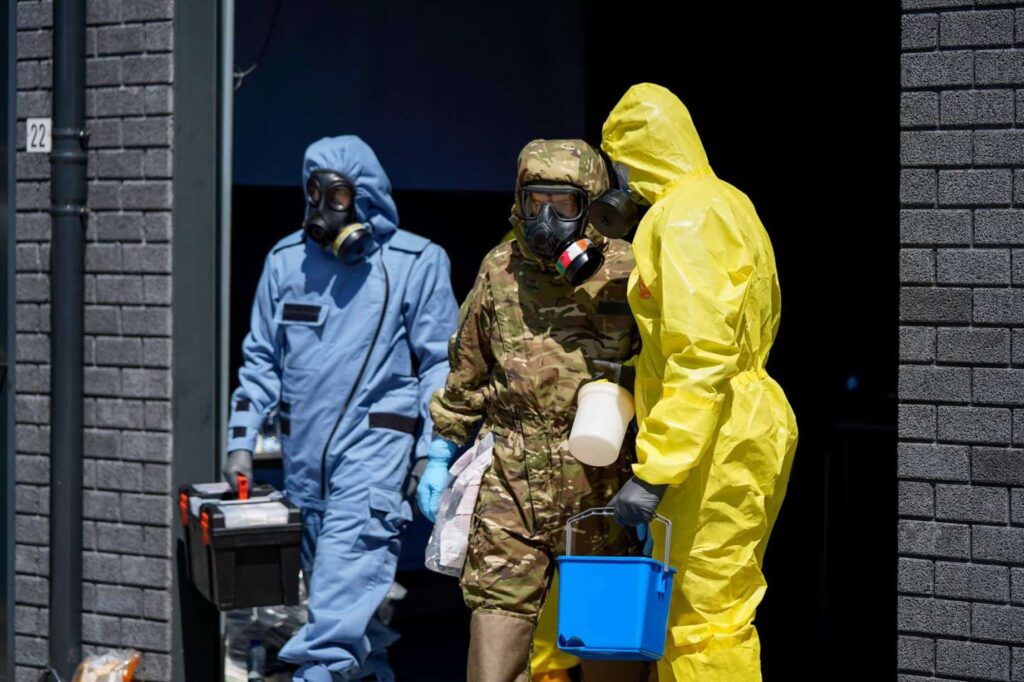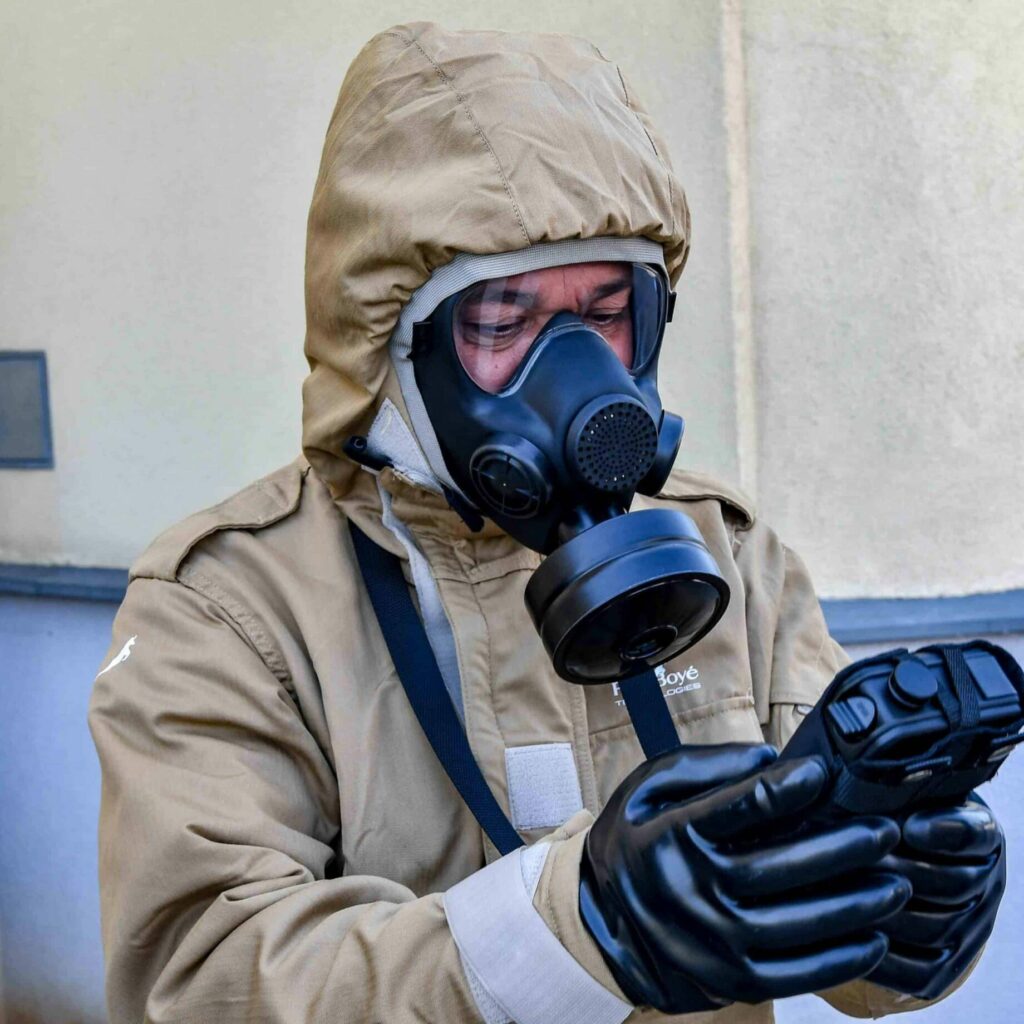Establishing, Enhancing, and Assessing the Units’ Response Readiness to CBRNe Threats.
By Mr. Boban Cekovic, General Manager Operations (CBRN SME), Hotzone Solutions, Netherlands.
The overall readiness of a unit to respond to a CBRNe threat is in most cases part of a larger emergency management and response system established on a local/regional or (inter)national level. These systems include other elements starting from national strategy and policy to initial threat and risk assessments leading, along the way, towards defining types and numbers and composition of different units responsible for answering to particular types of threats. Even in countries with a developed economy these units cannot react autonomously to each and every occasion, as this depends on the size and scope of the incident. Part of the national planning also needs to consider the number and capabilities of units, along with considering budgetary capacities and constraints, the probabilities, and consequences of possible CBRNe threats.
That balance between needed units and their capabilities on one side and budgetary restrictions on another side, due to lower probabilities of CBRNe threats materializing in actual events, has usually led to the scope and sizes of units that were expected to “deliver more with less”. And usually, highly professional units that are mandated to respond to various CBRNe/HAZMAT threats (whether within the fire department, police, civil defense, military, or industry, etc.) deliver exactly that, up to a point.
Not to have this article lament over this matter, mentioned is to just emphasize that CBRNe response units and their capabilities are part of a much larger system that has many factors/parameters involved. The focus of this article is on the main pillars of planning, establishing, and assessing the readiness of a unit to respond to natural or man-made caused emergencies involving the release of hazardous material of CBRNe nature and how is the realistic training one of the key influencing factors.

CBRNE Readiness
Once the CBRNE unit’s tasks, operational framework, responsibilities, operational zone, etc. are defined (not going into whether an appropriate balance between capabilities and expectations and budget is established), the team forming starts to get initiated. And it never actually stops but establishes a well-defined loop of team building, deploying, improving, developing, changing, upgrading etc., or, in other words, from forming, norming, storming, etc., all the way to post-deployment hot-wash and lessons learned implementation, back to the start.
And whether the unit is more specialized (such as a personnel decontamination unit or medical or EOD, etc.) or with a broad spectrum of tasking (such as mixed CBRNE recce and decontamination unit, or firefighter & HAZMAT unit, etc.), it’s readiness built-up, maintaining and enhancements do go through more or less the similar phases.
Main pillars of readiness
While most unit readiness-related activities are (and rightfully so) focused on training and equipment, overall to establish and assess the readiness of a unit to respond to a CBRNE incident, a balance of all five pillars have to be taken into account (with some of the inner aspects for each mentioned in brackets, if applicable):
– Personnel (structure; selection & recruitment; admin & clearances & appraisal; external experts/units engagement(s); succession plan; reporting; etc.).
– Equipment (CWA/TIC/VOC/O2/rad/bio detection/alarming; sampling; identification/analysis; scene exploitation; IPE & PPE; decontamination; medic. & trauma; comms & tracking; evidence management & Preservation & Data Analysis; UAV/UGV and other integrated equipment; etc.).
– SOPs (operational SOPs, Qualification/Training/Readiness/QC SOPs; post-incident protocols; etc.).
– Training (initial/basic individual skills; equipment usage; operational tasks; safety/security; group/small team tasks; physical and mental skills & endurance; assessment/analysis skills, interpersonal & coordination skills, information acquiring; complex/large team tasking, command & control; reporting; inter-agency etc.).
– Planning & Coordination (initiation protocols; short/long-term planning; on-scene management and coordination/cooperation/communication; external entities support – e.g. media, municipal/governmental/international, health, law enforcement, military, industry, NGOs, other CBRNe/HAZMAT units; etc.).
All five of these pillars of a unit’s readiness, albeit in the right proportions, have to be accounted for in order to proclaim that a unit is in the full state of readiness to fulfill all the tasks that the unit is designed/created for. However, that does not mean that each of the pillars in the case of every unit brings equal value, but the actual ratio between contributing/assessed pillars depends on also a number of parameters (such as units tasking, mandate, zone of responsibility, etc.). However, the key point is that all five pillars need to be taken into account while building up, maintaining, and assessing the unit’s readiness. Also, periodical repetition of the whole cycle has to be accounted for as well (once the unit readiness is “achieved”, complacency must not “kick in”).


Current events & realistic training
Events during the past decade(s) (e.g., anthrax letters, VX assassination, Skripal case, Navalny case, usage of CW in Syria and Iraq, toxic releases in a number of industrial incidents, the threat of nuclear incidents due to war in Ukraine, etc.), and many other threats prevented by law enforcement agencies (and maybe not even known to media), all lead to the re-confirmed recognition that, although CBRNe events are with somewhat low probability/frequency or different socio-economic instability, effects are all significantly larger than the actual casualty count (not minimizing any loss or damage of life or health).
Therefore, as CBRNE units’ size, number, tasking, and budgeting goes through up-and-down cycles, the unit readiness gets to be assessed whether through analysis of the response to actual CBRNE incidents or through proper assessment covering all five main readiness aspects.
One of the budget restrictions that get challenged is very often the need to train CBRNE/HAZMAT units (or units that need to perform their tasking also in a CBRNE/HAZMAT environment) in as real as possible conditions (one of the expressions “train as you fight”). Getting as real as possible experience and “mileage” is achieved through:
– Training that uses real C/B/R/E agents/materials
– Training that is performed in as real as possible timings, scenarios, and environment
– Actual response through genuine CBRNE incidents/events
As much as real experience from actual events is valuable, it is also undesirable and non-frequent, so, to train as realistically as possible, although possibly costly, is the most preferred way to develop and assess the readiness of the CBRN units.
Of course, prior to bringing a unit to the level to train complex scenarios in as real as possible conditions (and using at the same time, if possible, live CBRNe agents/materiel/devices), many steps from basic personnel skills and equipment push-button training up to small team protocols and procedures (including modern simulation and virtual environment based training) need to be addressed/perfected. And due to budgetary conditions, most of the training is stopped at that level and more complex scenarios are addressed through table-top exercises (and they do have a value as well).
Also, unless using actual locations as training sites (as train station or hospital, etc. which is occasionally possible but inflicts obstruction to daily operations), the number of training locations that are possible to be used for real size complex (and/or even mixed) CBRNe scenarios in real-time (and with using simulating C/B/R/N/E materials) are not easily available (due to proximity, operational, financial and/or other reasons) to each regional or even to many national units, and even fewer sites are available where actual C/B/R/N/E materials can be used in real outdoor/indoor scenarios. Also, the possibility of training with other nations’ CBRNe units and trying other equipment (outside of its own unit) is also possible but not very often.
So each CBRNE/HAZMAT task unit should seek opportunities to train or challenge itself:
– in a real-size training grounds representing possible CBRNe incident locations, and/or
– with coordinating/practicing responses with other units/departments (from within or even from partner countries), and/or
– with different equipment, and/or
– in testing the suitability of your unit’s SOPs and comparing it with other units.
This is possible on locations/sites such as ones where NTC organizes its Pro Challenge & Experience events (site locations from recent years providing realistic training environment):
– Dutch National Training Center Vught, NL (the 1st NCT Pro 2018)
– Camp New Amsterdam, NL (NCT Special Forces 2021)
– APG Edgewood, USA (NCT Pro Experience USA 2022)
– Stubička Slatina abnd.mil. rocket base, CRO (NCT PRO Challenge Europe 2022)
– Italian Joint NBC Defense School, IT (NCT PRO Training Europe 2021)
– Naresuan Base of the Royal Thai Border Police (NCT PRO eXperience Asia 2022)
About the Author:
Mr. Boban Cekovic, graduated from the Serbian Military Academy, as NBC Defense Officer. He obtained Master of Technical Sciences on chemistry of organophosphorus compounds. He served as NBC Defense decontamination unit leader and as a Commander of the Unit for Removal of C/R Accidents Consequences for the city of Belgrade.
He continued his research career, up to the Head of the Department for Decontamination and Detection Phenomena in the Military Technical Institute. From 2006 till 2015, he completed various postings with the OPCW – up to CW/Munition Specialist Team Leader (TL), Instructor and Head of Demilitarisation Inspections, also as a member of the UN investigation of the alleged use of chemical weapons in Syria in 2013 (Dept.to the TL of the OPCW component), then as a Field TL and as Head of Field Operations (rotational) within the OPCW-UN Mission in Syria.
From 2019-2022 he performed as Head of the Fact-Finding Mission of the OPCW. From March 2022, B. Cekovic resumed back as full-time Gen. Manager, Operations (CBRNe SME) in HotzoneSolutions Group, a CBRNe consultancy company, stationed in The Netherlands.





